Recent Articles
Popular Makes
Body Types
2020 Audi Q3 Road Test and Review
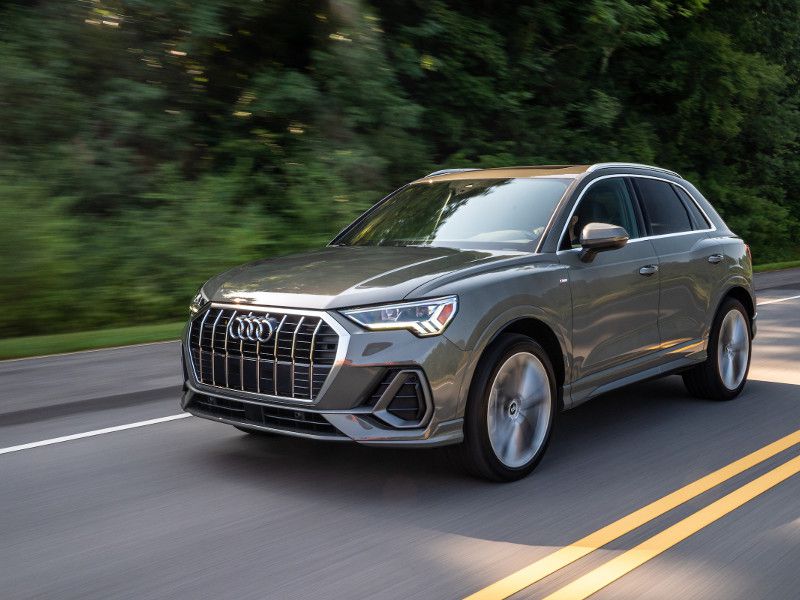
2019 Audi Q3 driving1 ・ Photo by Audi
Entry-level, subcompact, luxury SUVs like the 2020 Audi Q3 are caught between a rock and a hard place. For the same amount of money as their base prices, you can get a larger, better-equipped, and equally luxurious compact SUV from a mainstream brand, like a 2020 Mazda CX-5 Signature. Alternatively, a larger certified pre-owned luxury SUV is typically available for the same cash, letting budget-restricted yet aspirational buyers move one rung up the ladder in terms of size and quality.
This situation leaves the Q3 and its subcompact competitors to serve a narrowly defined customer seeking luxury and the latest technology in a tiny, urban-friendly package. Audi addresses this conundrum by making lots of desirable equipment standard for the 2020 Q3, while competitors demand upgrades to attain the same features. Is this approach, along with a complete redesign just last year, enough to fend off the diminutive Audi’s newest competition from Jaguar, Lexus, and Volvo? It should be.
Impressive List of Standard Equipment
For 2020, the Audi Q3 lineup includes Premium, Premium Plus, and Prestige trim levels. Prices start at $34,700, not including the $995 destination charge. A Prestige with every upgrade runs $46,290, including destination.
The standard equipment list is generous, equipping the Q3 with digital instrumentation, leather upholstery, triple-zone automatic climate control, heated front seats with eight-way power adjustments, a panoramic glass sunroof, and a power rear liftgate. The infotainment system features an 8.8-inch touchscreen display, Apple CarPlay, Android Auto, and a 10-speaker sound system. Quattro all-wheel drive, rain-sensing wipers, heated side mirrors, a set of 18-inch aluminum wheels, and LED headlights with automatic high-beam operation are also standard, along with a forward collision warning with automatic emergency braking. From there, buyers can choose sporty S-line trim and sport seats, bigger wheels, fancier paint, upgraded technology, and more. Is there value in the 2020 Audi Q3? Absolutely.
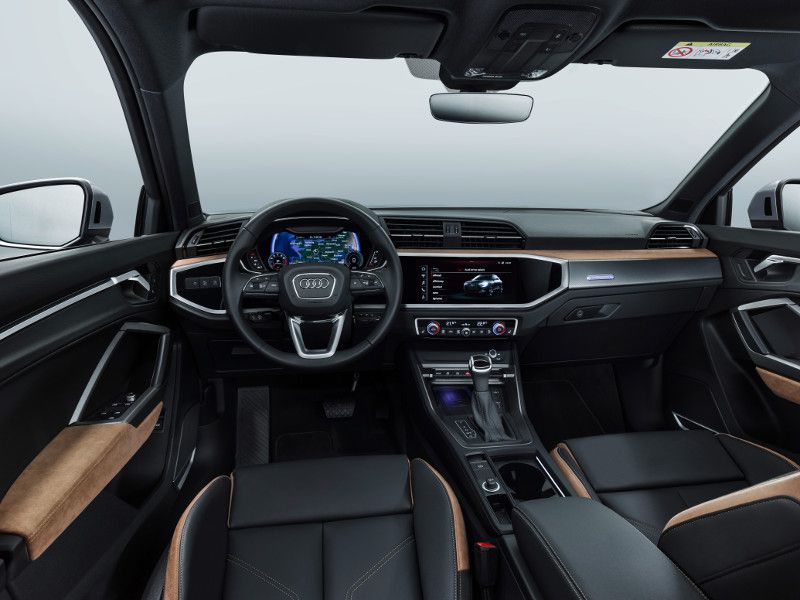
Photo by Audi
Out With the Old, In With the Old (Styling)
To the casual observer, the new Audi Q3 looks just like the old Audi Q3. In a style-conscious segment like this one, where a vehicle is a lifestyle accessory just as much as it is a mode of transportation, this is a problem. New and flashy is what this buyer seeks. With that said, the Q3 looks like a scaled-down, pint-sized Audi Q8, which is the automaker’s flagship SUV. Add S-line trim for some extra attitude, upgrade to the 20-inch wheels, and pick one of the more colorful paint hues, and this little Audi can grab lots of attention.
At a glance, the interior impresses if you prefer a cold, minimalist, high-tech look. Angular themes add some youthfully artistic whimsy, but the cabin clearly reflects Audi’s understated, no-nonsense approach to design. There is plenty of hard plastic inside of a Q3, so while it looks appropriately upscale, it doesn’t always feel that way.

Photo by Audi
Four people fit just fine.
Though small, the Audi Q3 does seat four adults in comfort. Thanks to eight-way power adjustability and heated cushions, the Q3’s driver and front passenger have no complaints. Between them, a sliding and height-adjustable armrest improves happiness levels. A huge panoramic glass sunroof is standard, bathing the cabin in natural light.
The back seat offers good thigh and back support, with just enough knee and shin clearance as long as the people in front don’t recline much. Taller people will want to avoid the back seat due to the hard materials on the front seatbacks. Triple-zone climate control is also standard, but rear-seat passengers don’t have their own controls for the system. Cargo volume is limited, too, measuring 23.7 cubic feet with the rear seat in use and 48 cubic feet with the rear seat folded down. Be sure to drop the adjustable cargo floor into its lowest setting to take maximum advantage of the space.
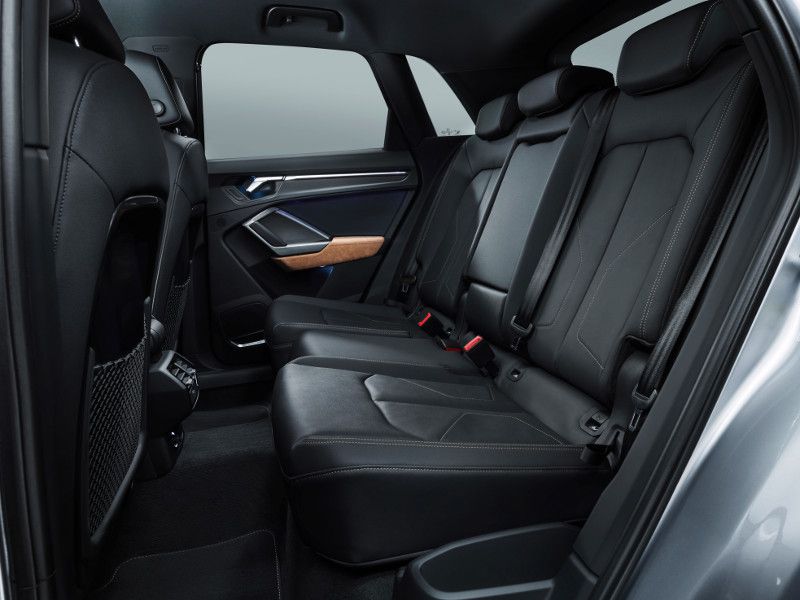
Photo by Audi
High-Tech Infotainment and Instrumentation
Optional with the Premium Plus trim and standard with the Prestige, the Q3’s larger 10.1-inch touchscreen infotainment system is remarkably sophisticated. Equipped with large menu tiles, haptic feedback, and a familiar smartphone-style user experience, it is reasonably intuitive if still distracting while you’re driving. Voice and handwriting recognition systems help in this regard, and physical volume and radio station controls reside both on the steering wheel and lower center console area.
Apple CarPlay and Android Auto are standard in all Q3s, and a wireless version of CarPlay is available. Additional upgrades include Alexa integration, SiriusXM satellite radio, wireless smartphone charging, and navigation. If this doesn’t impress you, the Prestige trim’s 15-speaker Bang & Olufsen premium sound system should. And if not, you ought to be wowed by the 12.3-inch Audi Virtual Cockpit instrumentation — especially with the navigation system’s Google Earth imagery projected onto the screen with the gauges minimized in each lower corner.
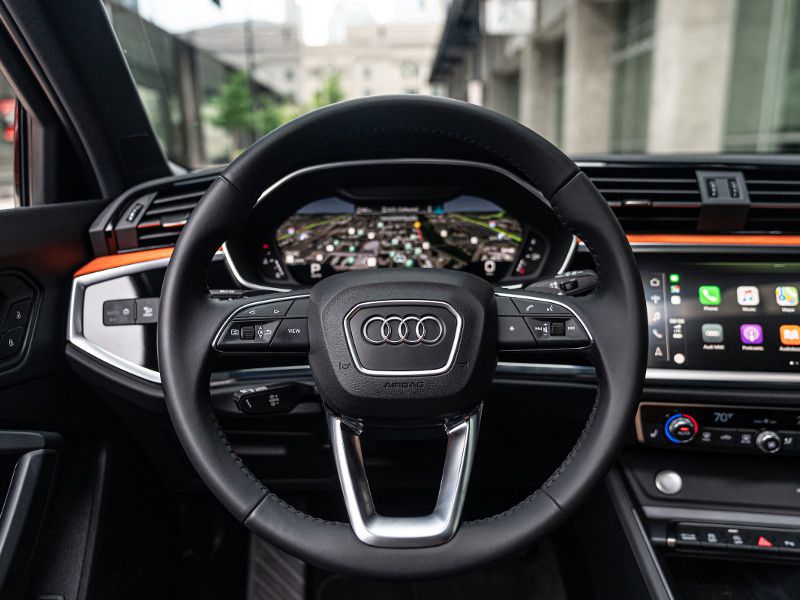
Photo by Audi
Top Safety Ratings
The Audi Q3’s roster of technology doesn’t stop there. This SUV has Audi’s Pre-sense Basic (which prepares the vehicle and occupants for impact) and Pre-sense Front (a forward collision warning and automatic emergency braking) as standard equipment. If you’re getting the Premium trim, you can upgrade with Audi Side Assist, which includes blind-spot warning, rear cross-traffic warning, and lane-departure warning (but not lane-keeping assist). These features are standard with the Premium Plus, which makes adaptive cruise control with stop-and-go capability available as an option. The Prestige includes all of these advanced driving assistance systems.
During testing, the Q3 Prestige’s assistance systems worked with refinement, operating in a subtle, unobtrusive fashion. This is good because then you’re more likely to keep them engaged rather than shut them off. And had a collision occurred, the Q3 would’ve done a good job of protecting my family. It gets a Top Safety Pick+ rating from the Insurance Institute for Highway Safety.
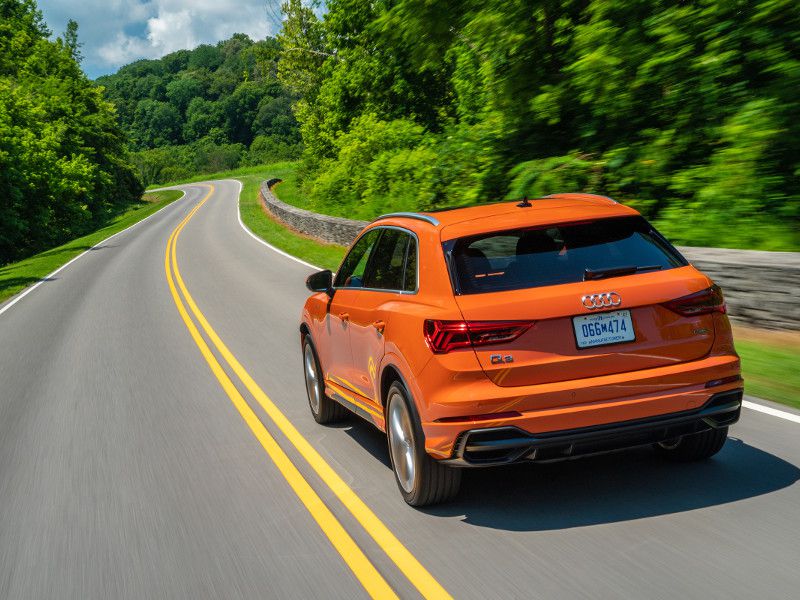
Photo by Audi
Hefty weight contributes to disappointing mileage.
Equipped with a turbocharged 2.0-liter four-cylinder engine making 228 hp and 258 lb-ft torque, an eight-speed automatic transmission, and Quattro all-wheel drive, the 2020 Audi Q3 provides decent acceleration, getting to 60 mph in about seven seconds. It definitely has a weight problem, though, tipping the scales at more than 3,900 pounds. That heft, combined with a mediocre 0.36 coefficient of drag, manifests itself in a low 22-mpg EPA rating in combined driving. By comparison, a mid-size Acura MDX equipped with three rows of seats, a 290-hp V6 engine, and AWD earns the exact same rating.
Audi Q3 drivers can choose between Comfort, Normal, Dynamic, Individual, and Off-Road driving modes. In Comfort, powertrain response is lazy. In Dynamic, it’s not. However, regardless of driving mode, frequent upshift delays interrupt the smooth flow of acceleration, causing aggravation. Out on my testing loop, driven in Normal mode except when switched to Dynamic mode and using the paddle shifters on the twisty bits, the Q3 returned a paltry 21.5 mpg.
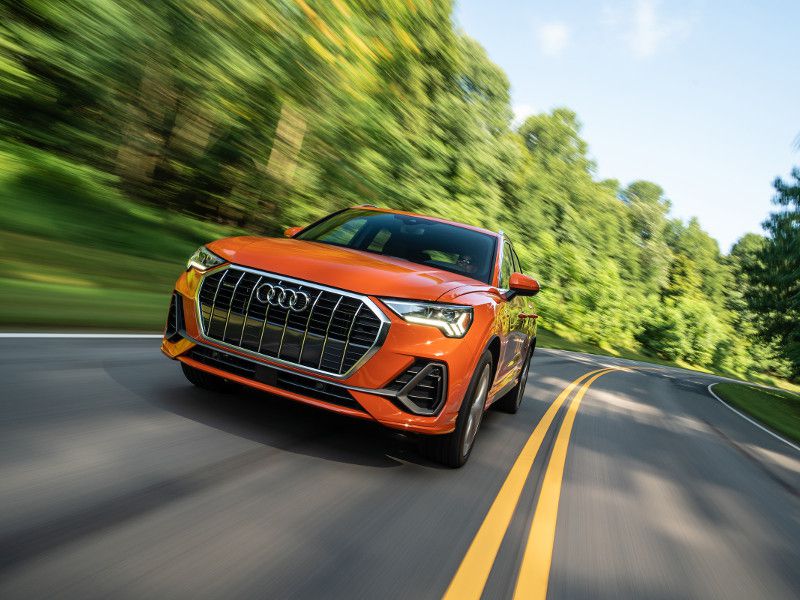
Photo by Audi
A Rollicking Time, Occasionally Good
The Q3’s two-ton curb weight also impacts the SUV’s ride and handling. Remember, this vehicle has a short wheelbase and a taller center of gravity than a car. Blend those traits with a fairly compliant suspension and Goodyear Eagle Sport all-season tires, and this Audi delivers a rollicking time, occasionally good.
As you’d expect from an Audi, the steering and brakes are nicely dialed in. And in Comfort mode, the steering is feather-light for easy maneuverability in urban areas and parking lots. Unfortunately, when driven hard on a road you know well, the Q3 suffers from bouncy, squishy handling traits. You can tell something potentially good is baked into the vehicle, but unless an SQ3 version of the SUV shows up, the Q3 isn’t the best choice for people who love to drive or for people who suffer motion sickness. For fun, I’d recommend a BMW X2 with M Sport tuning. For motion sickness, choose something with less head toss.
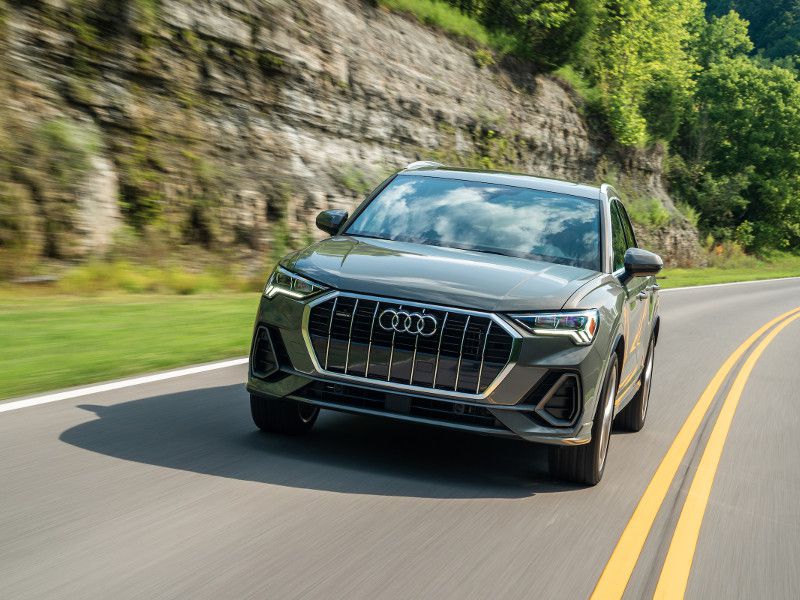
Photo by Audi
No Shortage of Competition
Speaking of competitors, you might want to know what alternatives there are to the Audi Q3 — aside from a loaded Mazda CX-5 or a certified pre-owned Audi Q5.
Relative newcomers to the segment, the Lexus UX provides a hybrid-powered variant while the Volvo XC40 reflects eye-catching design and good value. BMW offers a one-two punch with the boxy X1 and sporty X2, and the Mercedes-Benz GLA is the sales champ in the class, partly because so many of 'em wind up in rental car fleets. The Jaguar E-Pace is also new to the segment, while the Mercedes GLA-based Infiniti QX30 looks good but sits on dealership lots collecting dust. Based on my experience, only the BMWs and the Volvo give the Audi any serious competition — unless you want the Lexus UX hybrid. But a redesigned 2021 Mercedes-Benz GLA promises good looks combined with improved tech and dynamics.
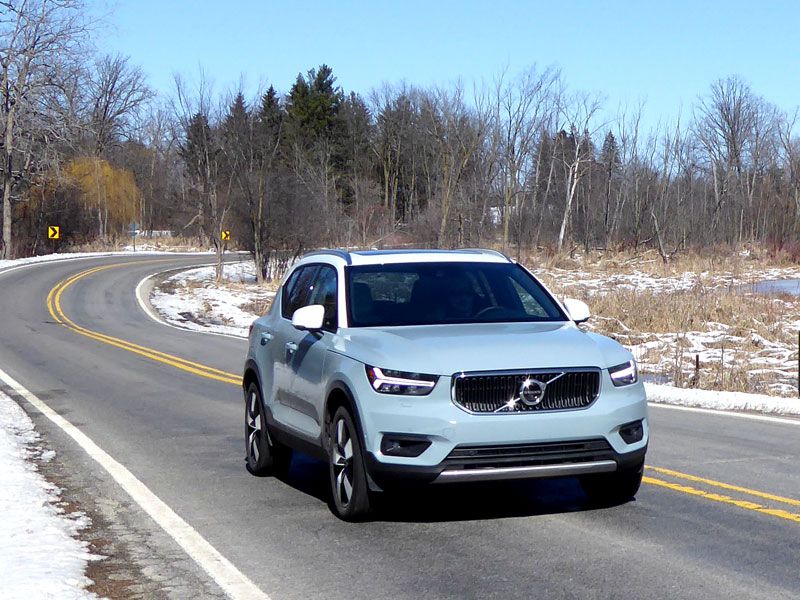
Photo by Ron Sessions
One of the Better Choices in the Class
Depending on how you define it, value is the Audi Q3’s strongest suit. You could buy a Q3 Premium, skip all of the options, and park a brand-new, nicely equipped Audi in your driveway for less than what you’d spend on a loaded Nissan Rogue.
Then again, a quick search on Autobytel.com turns up three pre-owned Audi Q5s at my local dealership, all with fewer than 8,000 miles on the odometer, and all priced thousands less than my Q3 Prestige test vehicle. Like I said at the start of this review, the customer base for a luxury subcompact SUV is a small one. If you count yourself as a member of this group, know that among the ones on sale today, the 2020 Audi Q3 is one of the better choices.
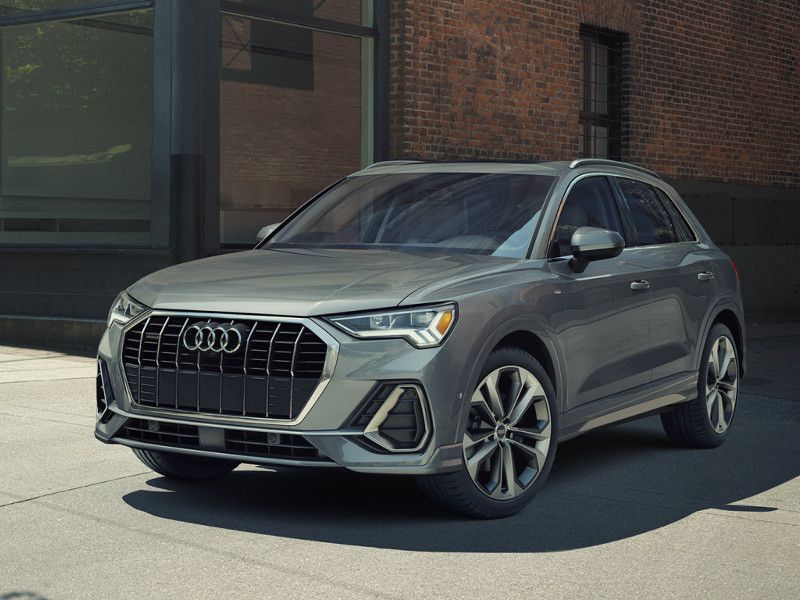
Photo by Audi